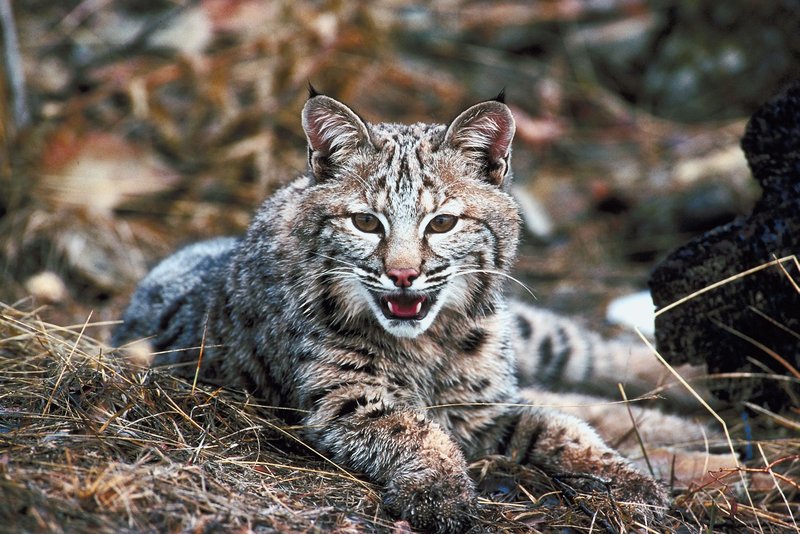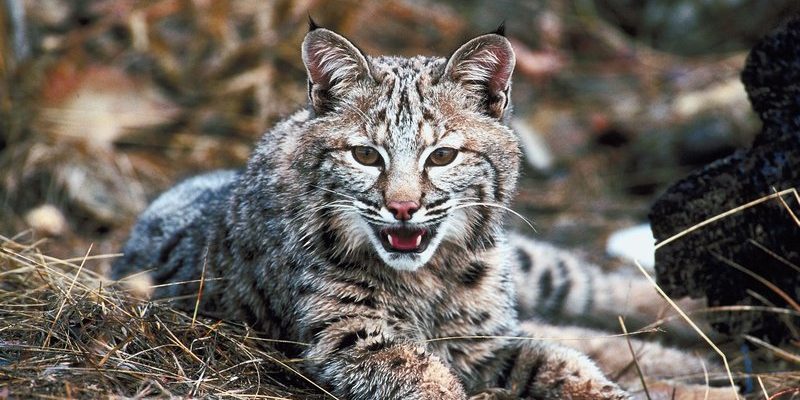
Bobcats are highly resourceful creatures. They’re not just about sharp claws and keen eyesight; their survival strategies are a blend of instinct, adaptability, and a bit of cleverness. It’s almost like they’re nature’s problem solvers, equipped to face anything from food scarcity to extreme temperatures. So, if you’re curious about how these fascinating animals navigate through their environments, grab a cup of coffee and let’s dive into the wild world of bobcats!
Physical Adaptations for Survival
One of the most striking things about bobcats is their physical adaptability. Their bodies are built for agility and stealth, which are essential for survival in the wild. For instance, bobcats have long legs and large paws that help them move swiftly through different terrains. When you’re trudging through thick snow, wouldn’t you want paws built like snowshoes? That’s exactly what bobcats have!
Bobcats also have thick fur that keeps them warm in colder climates. In fact, their fur changes color based on the seasons—darker shades in summer and lighter hues in winter—helping them blend in with their environment. This camouflage is crucial for both hunting and avoiding predators. Imagine trying to sneak up on your favorite snack while also trying to avoid being someone’s dinner—bobcats are pros at it.
Furthermore, their keen senses—particularly their hearing and sight—help them locate prey even in poor weather conditions. A bobcat can spot a mouse scurrying through the leaves from a distance, which is essential when food is scarce. This natural finesse means they can adapt to hunt successfully, no matter the habitat.
Diet Flexibility: What They Eat
You might be wondering what keeps bobcats fed in such challenging environments. Fortunately, they’re opportunistic feeders, meaning they’ll eat a variety of prey based on availability. Their diet can include everything from rabbits and rodents to birds and small deer. This flexibility is a huge advantage.
When food is plentiful, like during spring or summer, bobcats might feast on rabbits. But in winter, when those fluffy snacks are harder to come by, they’ll turn to other options. They’ve been known to hunt more aggressive prey such as birds or even scavenge from larger animals. It’s a bit like having a backup plan for dinner—if one meal is off the menu, they just whip up something else!
When bobcats hunt, they rely on their stealth. They’ll crouch low and move slowly, often waiting for the perfect moment to pounce. This patience and adaptability are both key to their success. It’s a constant game of hide-and-seek, and bobcats are champions at it.
Home Range and Territory
Unlike some animals that live in packs, bobcats are solitary creatures and establish their own home territories. Each bobcat claims a space that can range from 1 to 30 square miles, depending on the availability of food and habitat. Imagine it like having your own backyard where you know every nook and cranny.
Territory is crucial for bobcats, as it provides them with the resources they need. They mark their territory with scents, often using urine or scratch marks on trees to signal their presence to others. It’s a way of saying, “Hey, this is my turf!” This instinct to claim space allows them to control their food supply and avoid competition with other bobcats.
During breeding season, males will often roam beyond their usual territory in search of mates. This wandering makes them adaptable to changes in their environment, allowing them to find new opportunities. It’s a bit like taking a road trip to explore new restaurants—sometimes you just have to venture out!
Weathering the Elements
Bobcats are well-equipped to handle a variety of weather conditions. In harsh winters, they grow thicker fur to keep warm, and their hunting strategies change to accommodate snow-covered landscapes. You might picture a bobcat carefully padding through the snow, using its keen senses to locate prey beneath the white blanket.
During the summer months, they’ll seek refuge from the heat by resting in shady areas. Bobcats are also crepuscular, meaning they are most active during dawn and dusk. This behavior helps them avoid the heat of the day, making them more efficient hunters.
Additionally, bobcats are skilled at finding shelter. They’ll use dense foliage or rocky outcroppings to hide from predators and the elements. This ability to find or create safe spaces is crucial for their survival—just like any of us would want a cozy spot to escape a storm.
Reproduction and Raising Young
When it comes to reproduction, bobcats have a unique approach that helps ensure the survival of their species. Female bobcats typically give birth to one to six kittens in a concealed area, such as a dense thicket or a small cave. This protective strategy keeps the young safe from potential threats.
Kittens are born blind and helpless, relying entirely on their mother for care. The mother’s ability to provide food becomes a critical factor in their survival. As they grow, the mother teaches them to hunt and navigate their environment. It’s an essential learning experience—every successful hunt means more resilience in the wild.
By the time they reach six months, the young bobcats start to learn how to fend for themselves. They’ll usually stay with their mother until they’re about a year old before venturing out to establish their own territories. This life cycle ensures that they learn essential survival skills from an early age.
Bobcats are truly remarkable creatures, and their survival skills are a testament to nature’s resilience. They demonstrate a stunning array of physical adaptations, dietary flexibility, and clever strategies for thriving in harsh environments. Whether they’re battling the bitter cold of winter or seeking food in the heat of summer, bobcats showcase the beauty of adaptability.
So, next time you think about wildlife adaptability, remember the bobcat. They are more than just hidden hunters; they are master survivors. With their unique skills and instincts, they remind us that the wild is a place of endless surprises and challenges, and it’s all about knowing how to navigate them.

